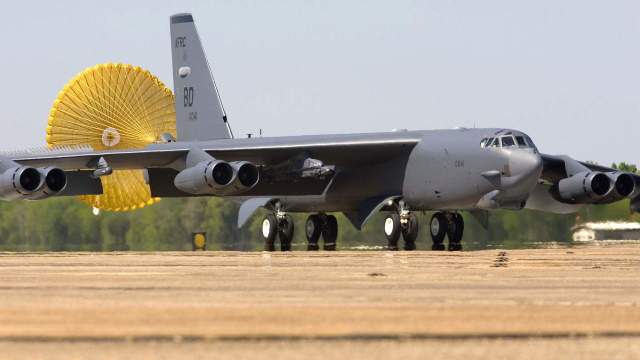The US Air Force announced a large-scale modernization of B-52 aircraftThe American Boeing Corporation in mid-October presented the first official image of the upgraded B-52 strategic bomber.
It is expected that the updated machine will serve until the 2050s. Izvestia was looking into what exactly and how it is planned to do with one of the oldest military aircraft in the world and what an American bomber will be in the middle of the XXI century.
On a Rolls Royce
The first flight of the prototype of the legendary centenarian took place on August 5, 1954. That is, the plane has already survived, apparently, all of its creators and now risks meeting the 100th anniversary in the air. The first B-52s began to enter service with the US Air Force in 1955 and gradually became the main heavy bomber for many years. A total of 744 cars were built. The last aircraft of the B-52H model with serial number 61-0040 was rolled out of the workshop of the Boeing plant on October 26, 1962.
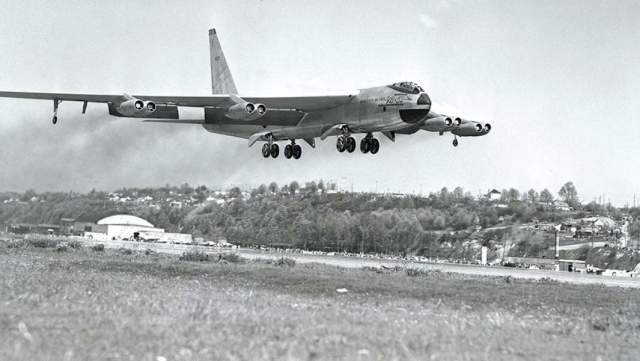
The first flight of the prototype of the B-52 strategic bomber
Image Source: Photo: commons.wikimedia.org
The appearance of the new B-52 will change slightly, but the metamorphosis will be thorough. This will probably be the biggest modernization of the aircraft in its more than half a century history. The main thing that will change is the engines. They will be seriously different from the old engines both in terms of the novelty of technology and in terms of efficiency. "The engine replacement program is the most important modernization of the B—52 in more than half a century," said Major General Jason Armagost, head of strategic planning at the USAF Global Strike Force Command. "This modification will allow the B-52 to continue to perform its most important tasks until the 2050s."
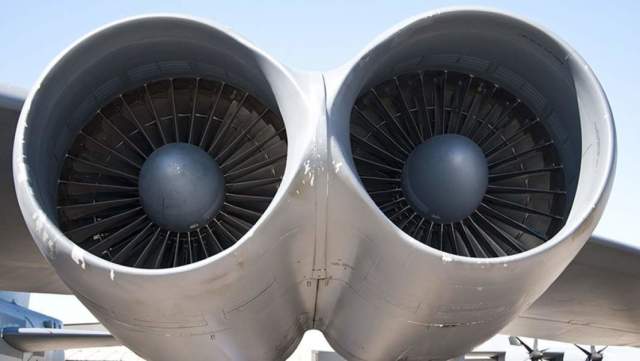
Pratt & Whitney TF33-PW-103 Turbojet engines
Image Source: Photo: commons.wikimedia.org
At the same time, the number of engines that carry the B-52 into the air will not change — as now, there are eight — four groups of two engines on pylons under the wings of the aircraft. Only instead of the usual Pratt & Whitney TF33-PW-103 turbojet engines, more modern Rolls Royce F130 turbofan engines will be installed. The new engines have already been tested. They are much more modern than the old Pratt & Whitney, the production of which ended back in 1985. It is curious that the Air Force plans to save not only and not so much on the fuel consumption of new engines, but on the cost of servicing power plants, which is growing every year, because the current engines are not manufactured by industry and are gradually becoming unique in general.
The engine of progress
For more than 20 years, the US Air Force has been discussing replacing engines with the B-52, and finally it will be done. By the way, no one plans to change the NK-12 engines in Russian Tu-95 aircraft — they remain as before one of the most efficient and economical for their class. It turns out that Soviet engineers in the 1950s created, apparently, the most perfect turboprop engine in recent history, which risks becoming the best engine of the XX–XXI centuries.
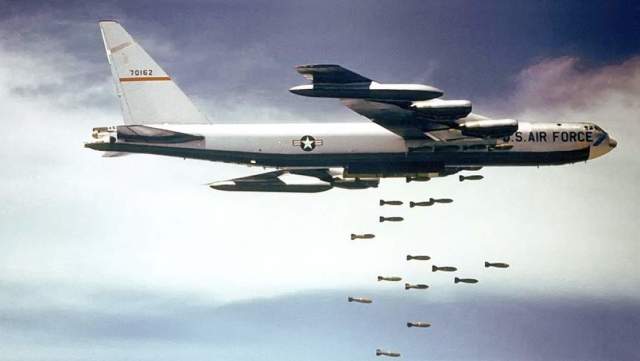
A B-52F strategic bomber drops bombs during the Vietnam War. Photos from 1965-1966
Image Source: Photo: commons.wikimedia.org
Of course, the most modern equipment will also be installed on the updated aircraft. For example, the upgraded B-52 will receive a new radar with active phased arrays based on the AN/APG-79 radar. This will be the most noticeable solution in the design of the B-52, as it will lead to a change in the contours of its bow. All optoelectronic sensors will move from the nose of the aircraft to containers under the wing. New communication equipment will also be placed in them — just as now, the B-52 will remain part of the strategic strike forces and it should always be in touch. The cabin of the new B-52 will become even more "glass" than it is now — for the fullest possible implementation of the concept of modern network-centric wars with bringing to each crew the maximum amount of information about the enemy in real time. The crew of the aircraft should know everything about the targets that the command center of the operation knows. This is provided by communication and a digital "glass" cabin — it is so called because of the abundance of displays.
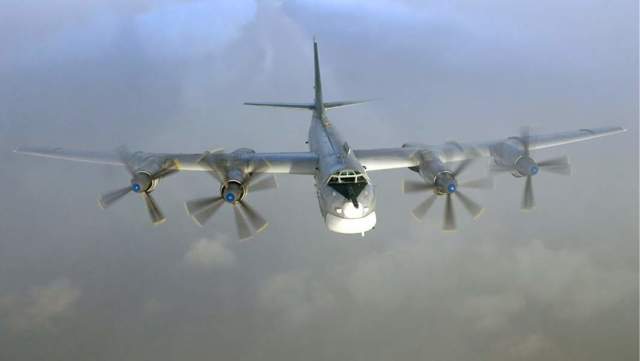
Russian turboprop strategic bomber-missile carrier Tu-95MS in flight
Image source: Photo: commons.wikimedia.org
What weapons will the updated B-52 carry? It should be noted here that in the 1990s it underwent modernization for the use of the most modern strike missile weapons. 47 B-52H aircraft underwent the so-called extended non-atomic modernization. The bomber was able to use the latest high-precision corrected bombs JASSM, JDAM, JSOW and WCMS, and also became the owner of the latest navigation systems. But in the XXI century, the requirements for a new strategist are becoming even more revolutionary — the aircraft must carry hypersonic missiles that have not even been tested yet. With a high degree of probability, the new carrier will have to lift into the air sufficiently large hypersonic products with powerful and massive overclocking blocks. These will be multi-ton rockets, more than 4-5 tons each. Probably, the updated B-52 will be able to carry under the wing from four to eight such missiles at a range of more than 15,000 km.
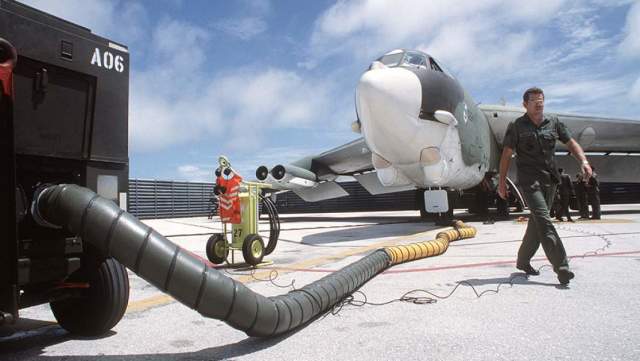
A B-52 strategic bomber during pre-flight maintenance at Andersen Air Base in Guam
Image Source: Photo: commons.wikimedia.org
Of course, the updated aircraft will be able to use conventional cruise missiles, and even conventional gravitational atomic, and if necessary, non-atomic bombs. Taking into account the high accuracy of modern navigation systems, the use of free-falling atomic bombs provides a very accurate defeat of important enemy objects. The question here is rather that when bombs are used in the target area, there should not be any serious air defense. Otherwise, no radio suppression and electronic warfare systems will save you.
It is expected that the new B-52 will enter the US Air Force in the next three to four years, and the mass replacement of aircraft will begin in 2028 and will be completed by 2035. The upgraded aircraft will be designated either B-52J or B-52K. We will get used to the new name of the symbol of America's strategic aviation. Given the active development of hypersonic weapons in Russia and China, the United States wants to fend off growing challenges, and in the coming years this desire for leadership will force the United States to conduct several programs to modernize strategic nuclear forces. The new intercontinental ballistic missile, the upgrade of the underwater strategic component, the new B-21 stealth bombers and the modernization of the B-52 veterans are all links in the same chain.
Dmitry Kornev
